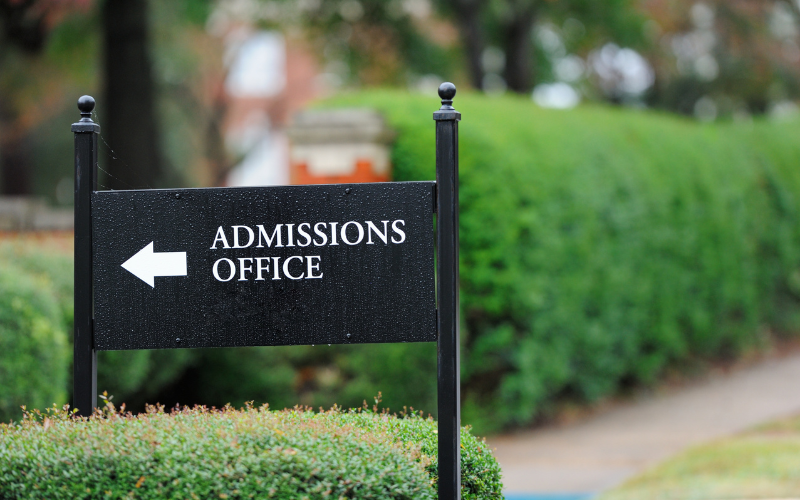Last week, I read a tweet from Jeff Selingo indicating that Coursera was partnering with Georgetown University to offer a bachelor’s degree in liberal studies. The tweet led to this Forbes article written by Michael T. Nietzel, president emeritus of Missouri State University. Dr. Nietzel mentioned that he read about the new degree from Coursera’s blog in an article written by Betty Vandenbosch, Chief Content Officer at Coursera.
The title of the blog post was “Georgetown University partners with Coursera to launch an online bachelor’s completion program for adult learners.” The subtitle was “Accessible, affordable degree from leading U.S. university can be completed for $22,400.” “The Devil is in the details” is an expression that I have heard for years. Clearly, the details were important.
As I read through the blog post, I noted that the degree was offered through Georgetown’s School of Continuing Studies, and not Georgetown University. The School of Continuing Studies offers a 30 credit Master’s of Arts in Liberal Studies and a 36 credit Doctor of Liberal Studies degree. The bachelor’s is their first degree offered through Coursera.
It’s my assumption that Georgetown’s School of Continuing Studies (SCS) graduates receive Georgetown University diplomas but that the diplomas have the notation of School of Continuing Studies differentiating them from the more expensive and prestigious mainstream campus programs. Schools of Continuing Studies generally have the same status as Executive Education divisions of traditional higher education institutions. The cost of attendance is a little less, and the diploma is not the same as the one received by the students who pay full freight.
The degree is touted as a completer program, but Georgetown only offers up to 64 credits for transfer out of a 120-credit degree. Generally, most accrediting bodies allow credit transfers up to 75 percent of the total credits required which would allow up to 90 credits out of 120 credits. It’s my assumption that Georgetown wants more money from students in two ways: higher tuition per credit and more credits required to earn that diploma with Georgetown SCS on it.
The blog touts that each credit costs only $400 which is 22 percent more affordable than the average online credit hour from privately ranked colleges. The source of that data originated with EducationData.org which claims to be an accuracy-seeking team of two researchers who source their information from the Department of Education. Nonetheless, the Coursera blog uses the private ranked college data and not the public ranked college data which would be less costly. I found it interesting that the Education Data Initiative website states that the tuition for online college averaged $60,593 for private colleges. Using that number (divided by 120 credits), I get a cost per credit of $505 which is approximately 21 percent more than the $400 rate cited for this program. The cost is less than the approximate $660 rate for a similar degree offered by the Harvard Extension School.
The blog indicates that the courses will be asynchronous and taught by Georgetown faculty with online “high-touch” student support. Students “can choose a job-relevant concentration including business, communications, and international relations.” Dr. Vandenbosch writes that “nine out of 10 employers view the skills taught in liberal studies programs to be important for success in the workforce.” When I reviewed the source of that quote, a publication of the AAC&U, it appears that the reference is to a broader group of liberal arts degrees, not specific degrees in liberal studies.
The blog article continues with the statement “graduates of the on-campus program significantly advance job levels, with 43 percent progressing to an executive or director level position.” It appears from the SCS website that the bachelor’s degree is new and not the source of the 43 percent of graduates progressing to these great jobs. Maybe there’s a correlation, but that would not be a statement that I would want to use in the degree marketing materials since the current campus programs are master’s and doctoral only.
Lastly, applications will open in December 2022, with classes beginning in Summer 2023. This gap provides the illusion that there is some selectivity of candidates for admission. Usually, degree completer programs are not selective. The SCS would also benefit, in my opinion, from allowing up to 90 credits (75 percent) transfer because the reality is that very few students will transfer that many. Also, the $22,400 cost to complete (followed by an asterisk) is misleading. The real cost of the degree is whatever it cost for the student to earn the 64 credits transferred plus the $22,400. In the interest of transparency, if no credits are transferred, the cost of the degree if all courses are taken through the Coursera/Georgetown partnership is $48,000.
There are many other questions that I have about the Coursera/Georgetown partnership for which answers are not yet available. For example, what is Coursera’s share of the revenue for marketing to prospective students? What does Coursera estimate the annual enrollment in a degree program like this will be? Will employers value this degree like they do the master’s degree with the same name? Coursera has gained more than 100 million learners by offering low cost or no cost courses. This is its 40th degree and while its cost is lower than the traditional cost for Georgetown students, it’s not a low cost degree. How does that align with Coursera’s mission as well as Georgetown’s?
It will be interesting to see how many people sign up for this degree. From my experience, there are existing online degrees that are less expensive and more transfer friendly. To a working adult student, that makes a substantial difference in costs unless their employer pays the full tuition. There’s also the matter of time to completion, particularly if you have already earned more than 64 credits. What are your thoughts?











